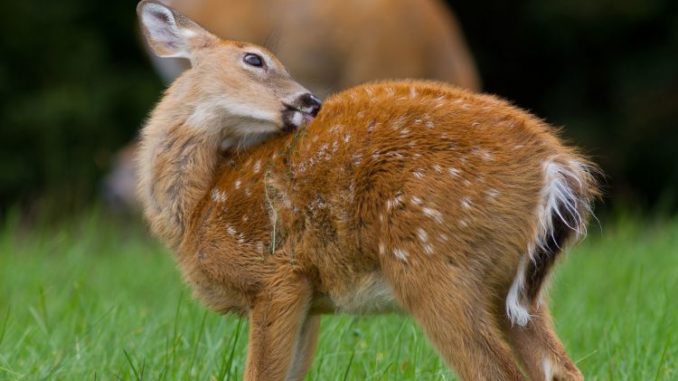
Hunters could feel effects of poor recruitment last summer as soon as this season, Bordelon says
While the deer harvest increased statewide by 12 percent during the 2015-16 season, fawn recruitment and poorer than expected lactation rates in certain areas of the state were a major concern noted in the annual Deer Report prepared by the Louisiana Department of Wildlife and Fisheries.
The department’s deer study leader, Johnathan Bordelon, said lactation rates among does harvested last fall were below 50 percent statewide for the first time ever.
Does that were “dry” and no longer producing milk when shot by hunters are a potential indicator of poor fawning success last summer.
“Lactation was definitely down. The averages dropped pretty substantially in bottomland hardwood areas, and that was more or less our bread and butter,” Bordelon said. “To see it drop substantially, it raises a red flag.
“And you look at the average going down, but not every property or WMA was the average. You had some folks who were at 80 percent, which is exceptional — the gold standard. Then you had some folks way down, below 50 percent. So there’s not just a basic answer to it. So what happened? Did the fawns hit the ground? And if they did hit the ground, did something happen between then and the fall? What’s going on there?”
Some specific sites provide more questions than answers, he said.
“On Thistlethwaite, lactation is over 80 percent. On Buckhorn, over 80 percent. Will it impact them? No,” he said. “But you take Grassy Lake, which is right between those two areas, and it’s at 30 percent.
“So what happened there, with the same weather.”
Disease, late flooding and predation are just a few of the options biologists are considering in investigating the decline, Bordelon said.
“I don’t think it’s the same answer everywhere to be honest with you. I think you had some late flooding in areas, and I think that did hem up some deer. I think that habitat was severely compromised and underwater so long, so where it was green and where it was good was a limited amount of area,” he said. “You’re concentrating animals, so could predation be better or worse? Certainly, I could see where that could contribute and be part of it. Could it have also increased disease transmission risk? Yes, it certainly could have.
“But there’s areas that didn’t flood that had issues. So there’s not just going to be an answer that’s a catch-all. The important thing for people will be to try to monitor, or at least collect data moving forward, to see if this is something that’s continuing, or if this was something that’s just an anomaly.”
In the short term, some hunters will feel the effects of the apparent poor recruitment as soon as this season.
“On some of these public areas, they’re going to take a hit this year, because where you traditionally had good lactation and pretty good reproductive output, you’re basically not going to have as large of a year-and-a-half-old age class out there on the landscape this year,” Bordelon said. “And you look at many of those public areas and you look at the percentage of deer that make up the harvest — often the year-and-a-half-old age class is the largest contributor.”
Bordelon suggested that hunters on private property keep good records this year, especially noting lactation rates this fall. And he hinted that public lands seasons could change in the future if last year’s lactation numbers continue.
“The take home is regardless of what the cause was, the effect is lower productivity,” he said. “And if that continues, even when you’re talking about a private piece of property, you’re going to have to change your harvest strategy.
“It’s something that needs to be on our radar, and we have to continue to look at. The important thing is to monitor it and keep good records and use that information to make good decisions on future harvest strategies, regardless of whether it’s public or private land.”
According to the report, 156,000 deer were harvested statewide, with the total number of deer hunters last season at 192,200.
Union Parish led the way in the harvest, with 4,124 animals. Bienville, Vernon, Claiborne and Natchitoches parishes rounded out the Top 5.


